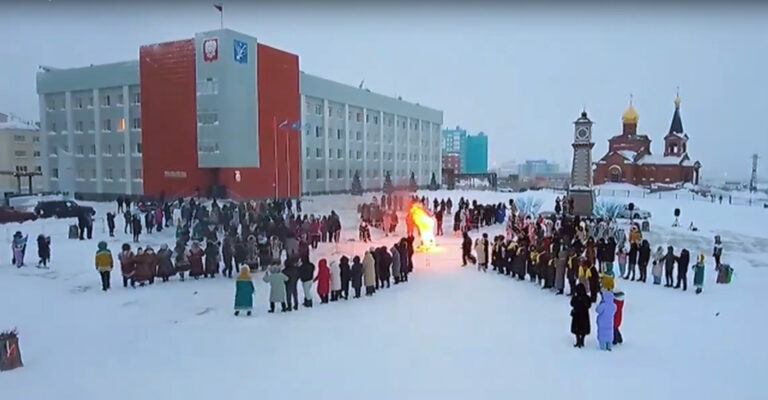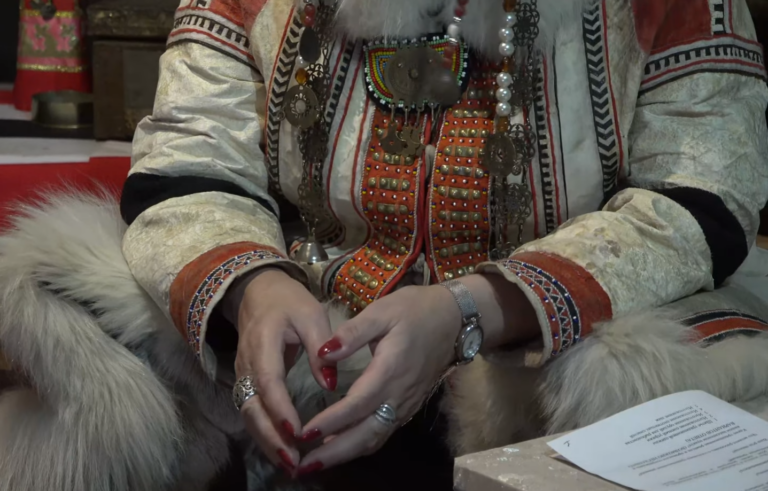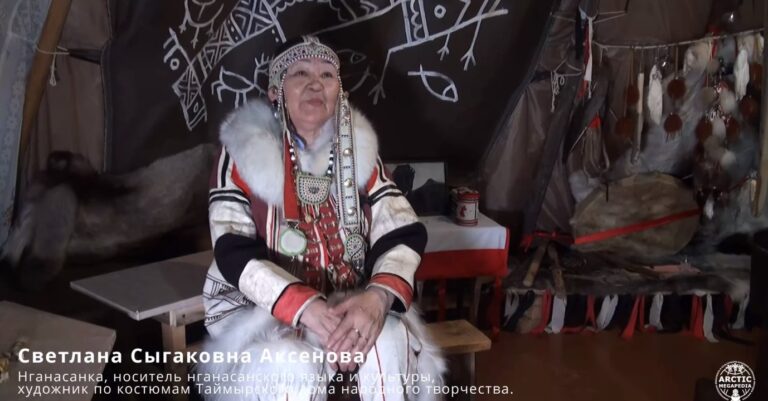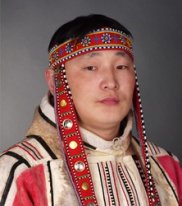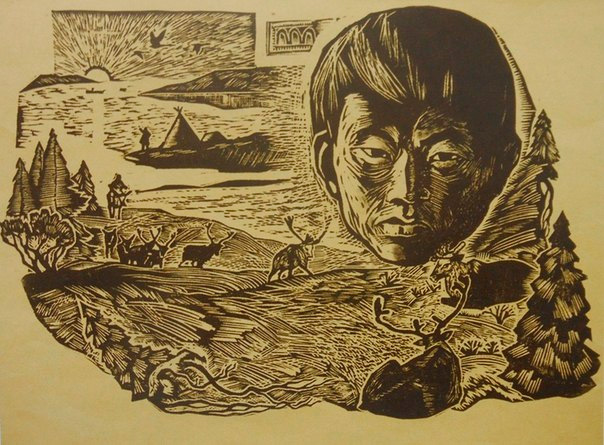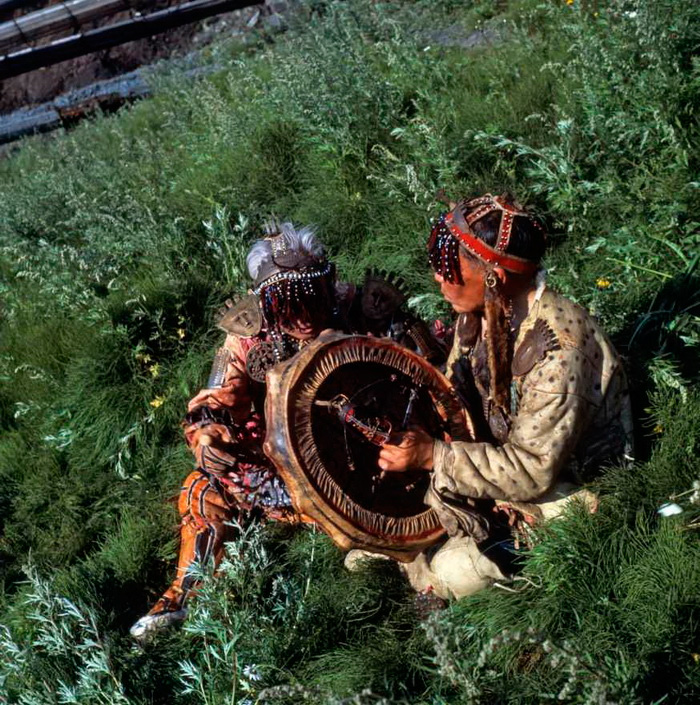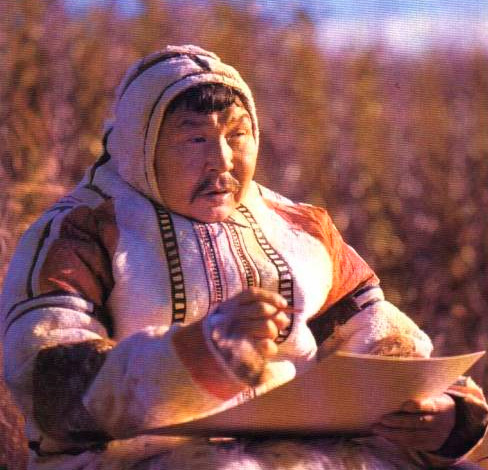Nganasans
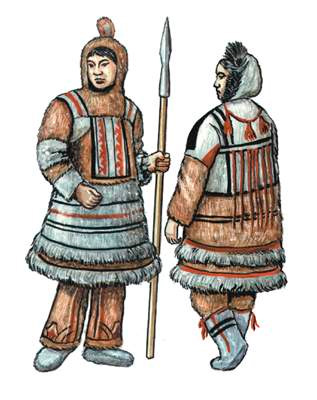
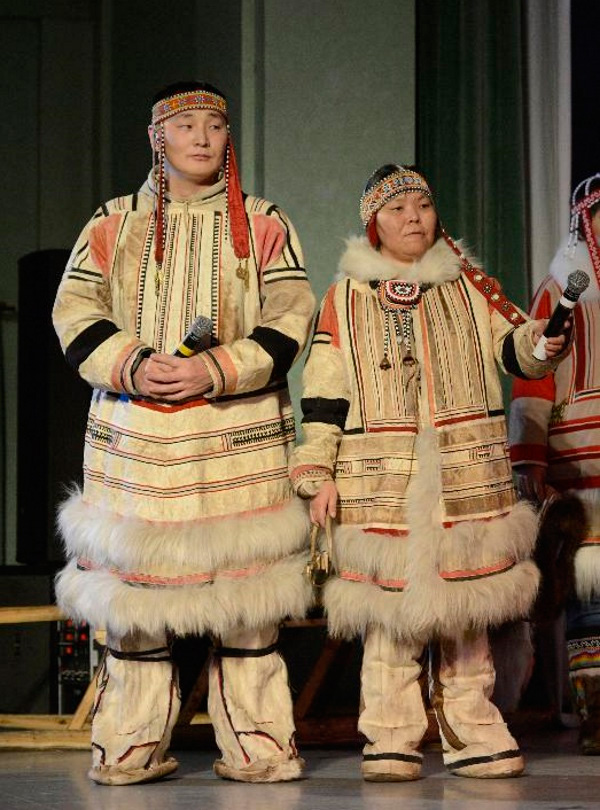
Number of people – 687 человек (Всероссийская перепись населения 2020-2021 года).
Language - the Samoyedic branch of the Uralic-Yukaghir family of languages.
Settlement – Красноярский край, Таймырский Долгано-Ненецкий район.
Nganasans (tavgiys) — коренной народ севера Красноярского края. Живут в центральной части полуострова Таймыр. По данным переписи населения 2020-2021 гг., их общая численность в стране составляет 687 человека, большинство проживают в Красноярском крае.
The Nganasans are divided into western — Avam — with centers in the villages of Ust-Avam and Volochanka of the Dudinsky urban settlement and eastern — Vadeyevsky — with the center in the village of Novaya Khatanga rural settlement. They differ in family and generic composition, dialect features of the language.
The ethnonym "nganasans" was introduced in the 1930s, formed from "nganas" — a man, a man. In prerevolutionary literature they are aknowledged as the Tavgiy, the Avam, the Vadeyevsky samoyeds (it's by the name of their most numerous groups) or just as the Samoyed. They speak in Nganasan language of the Samoyedic branch of the Uralic-Yukaghir language family; there are distinguished the Avam and the Vadeyevs dialects.
Nganasans are descendants of the ancient population of Taimyr, hunters of wild deer of the Neolithic era. They spoke in uknown language. In the Middle Ages they got strong influence of the Tungus and then the Samoyeds. As an ethnos the Nganasans formed by the XVII—XVIII centuries from several tribal groups — the Pyasid Samoyad, Kuraks, Tidiris, Tavgs, etc. By the time the Russians arrived, they were already speaking the Samoyed language.
In the modern tribal composition of the Nganasans, along with the Paleoasiatic (Yukaghir) component, there are Tungusic (Evenk) features which largely determined the ethnic specifics of their culture and language.
The Nganasans led a nomadic lifestyle until the middle of the XX century. Their main traditional occupation was hunting wild reindeer, arctic foxes, hares and birds (partridges, geese, ducks). In autumn, the Nganasans used to hunt for a reindeer on seasonal water crossing with the special water obstacle. In winter, deer were driven into nets or fences. Individual hunting was practiced with a deer-bait, with a dog, with a camouflage shield, etc. The processing of deer skins was well developed.
Reindeer husbandry was purely of a transport nature. They used various types of sleds: light for spring, warm for women, cargo (several types). With the transition to sedentarism by the 1960s and with an increase in the population of wild deer, domestic reindeer husbandry had practically disappeared by the 1990s.
For nowadays, most of the Nganasans have switched to non-traditional occupations in stationary settlements. For a small part, the commercial importance of hunting (wild deer, furs) and fishing is preserved.
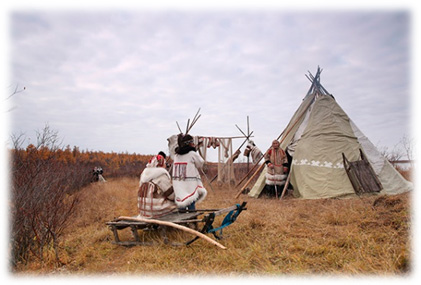

Nomad camps of the Nganasans are arranged in the same way as those of other tundra reindeer herders. They consisted of three or four conical tepees (chums) each was from 3 to 9 m across. In wintertime were used "golomo" - it's a pyramid dwelling, the walls and roof of which made from half beams and planks and to cover the top they used a turf.
Since the 1930s, a mobile hut borrowed from Dolgans began to be used as dwelling — a rectangular closed sleigh covered with deer skins or tarpaulin. The mobile hut is heated by an iron stove.
Since the middle of XX century most Nganasans began to live in villages and live in houses that built on standard projects. The chums stayed only in a few families.
Traditional clothes was made from reindeer skin and it was decorated with an applique of fur of different colors.
Men's clothing is composed of white colored deerskin parka. When it's cold over the parka they wore a body shirt of a deaf cut with a hood made of cloth or fur (sokuy).
Woman's clothing is a swinging parka (lifariye) and a suede made of deer or elk skin jumpsuit (phoniye) with metal plaques sewn on the chest. Instead of a hood they wore a white bonnet (s'ma) with a fringe of black dog fur. The clothing was beautified an application and geometrical ornaments. By them you could identificate the social status of a wearer.
The kamus shoes of Nganasans were distinguished by the fact that they did not have a notch in the rise. Men wore belts to which they tied the tops of shoes, a knife in a sheath, a flint, a pipe case, a pouch. In springtime to protect their eyes from the bright sun they wore dark sunglasses. Women and men braided their hair, greased with deer fat, into two braids. Metal pendants were woven into braids. For now, about a quarter of Nganasans prefer to wear national clothes.
The basis of the traditional cuisine was dishes of venison, fish, and waterfowl. The most common dried meat and fish, which were harvested for the future. Tea, tobacco, and flour were borrowed from the Russians quite early, from which flatbread were made. Tortillas made of flour with caviar were considered a delicacy. Today, national dishes still form the basis of the Nganasan food, although imported products have spread quite widely.
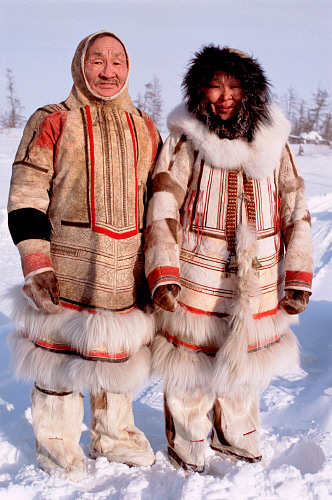
The decorative art of the Nganasans is represented by carving on mammoth bone, inlay and stamping on metal, skin coloring and patterned sewing with deer hair.
Until recently, the Nganasans knew their ancestral structure well. Today, only a part of elderly people knows about their belonging to one or another Nganasan family.
Until the XX century the Nganasans strictly observed endogamy, marrying mainly in their own environment. The only exceptions were marriages with the Ents, a people close in language and culture. Today, the number of marriages with other nationalities has increased sharply, most often with Dolgans and Russians, and the share of mixed families has already exceeded 50%. 50%.
Nganasan marriages were concluded at the request of the young. Upon obtaining the consent of the bride's parents, first of all her mother, they agreed on the amount of the bride-money (kalym), the payment of which (deer, skins) was considered indispensable. The wedding feast was arranged first in the nomad camp of the bride, then the groom. At the wedding ceremony, a special festive harness was used. Subsequently, it is used only once — at the funeral of the owner.
В гостях у нганасан
The Nganasans had several varieties of funeral rites. The decedent was wrapped in skins, laid on the ground, and buried in the snow in winter. A small chums was being built over it. There were burials in a natural pit. Sometimes they were buried in a log cabin placed on the ground.
The Nganasans prepared special funeral clothes in advance, it could be used during big holidays during their lifetime. At the funeral, a deer belonging to the deceased was slaughtered and the carcass was left on the grave. After the funeral, they stepped over three bonfires (a rite of purification). The chum of the deceased was transferred to a new place. The grave was no longer visited. Among the Nganasans believers there are both Orthodox Christians and adherents of the traditional beliefs. The state of religion up to the present can be assessed as syncretic. Along with such characters as Earth, Sun, Fire, Water, etc., lesango — the Russian god, Mikolka-the god (Saint Nicholas) appears, icons are associated with images of their patron spirits.
After baptism, the Nganasans did not abandon the traditional worldview system (animism, commercial cult, shamanism). The costume of the most famous Nganasan shaman of recent years, Tubyaku, as a personal gift, was transferred to the Taymyr Museum of Local Lore in 1982.
The honor of the Nganasans, who will throw his lasso further (Nganasan proverb).
Ancient traditional holidays were also associated with traditional beliefs. After the end of the polar night, a pure chum (malusya) festival was held under the guidance of a shaman or passing through a stone gate (fala-futu). During the summer solstice, Aniodyaly (Big Day) was celebrated, with games and competitions. And today this holiday is celebrated annually in the village of Volochanka.
The folklore of the Nganasans is diverse. First of all, these are musical and narrative epic tales about the exploits of heroes, the performance of which stretched over several evenings. Fairy tales, short stories, myths, riddles, ditties, spells are also common. The songwriting is diverse. The Nganasans could improvise, compose songs on the go. Musical instruments include Yakut—type tambourines with a mallet, a singing bow, horns, buzzers made of bird feathers.
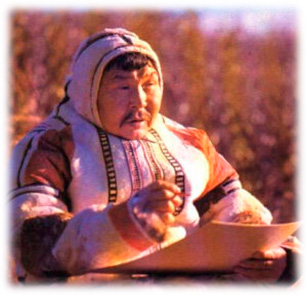
Decorative art is represented by carving on mammoth bone, inlay and stamping on metal, skin coloring and patterned sewing with deer hair.
In 1980s the Nganasan script was created, and the native language began to be taught in primary schools. The Nganasan folklore groups "Hensu" (Volochanka village) and "Ngamtuso" (Ust-Avam village). In recent years, national literature has been actively published — "Nganasan folklore anthology" (in Nganasan with translation), "The Origin of the Nganasan people", etc.
The Nganasans participate in public life through the Association of Indigenous Peoples of the North.
The most famous representative of the Nganasan people is the graphic artist, People's Master of Russia Motyumyaku Turdagin (1932-2002). His works have been exhibited in many cities of Russia and abroad. In 2002 a memorial museum was created in Dudinka, in the funds of which there are more than a hundred works of art and personal belongings of the artist.
Articles
Персоналии нганасанов




